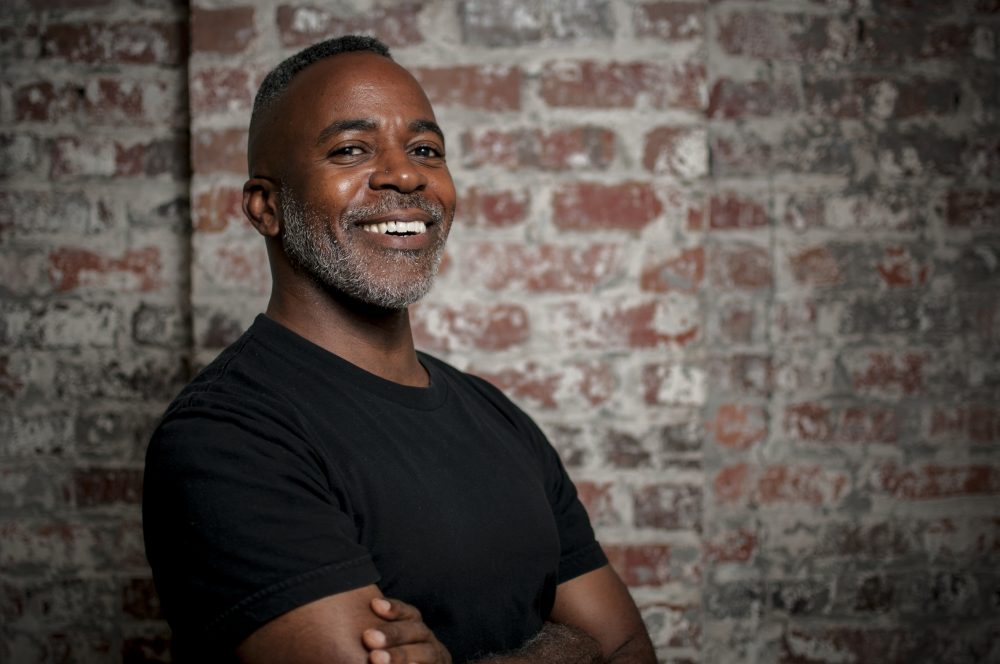
 By Jess Taylor
By Jess Taylor
DAVIS – On Thursday night, Mercy Hawkins, an MFA student in her last year at UC Davis, welcomed guests via Zoom to the sixth and final lecture series of artists. The hope of these events is to have viewers see innovative art practice and carry the newly gained knowledge into their artwork.
The night’s guest speaker was the widely acclaimed Arnold J. Kemp. The artist has collections in the Metropolitan Museum of Art, Studio Museum in Harlem, Berkeley Art Museum and Pacific Film Archive, Portland Art Museum and an array of others.
Kemp currently has an exhibit at the Manetti Shrem Museum called “I could survive. I should survive. I will survive.” Viewing of this work will be available at the museum until April 25th.
Before inviting Kemp to the screen, Timothy Hyde, assistant art director, noted the excellence brought by students and faculty to create a dynamic series. He then explored Kemp’s work in its language of politics embedded in his art.
Sampada Aranke, Assistant Professor in Art History, Theory, Criticism Department at the School of Arts Institute, Chicago held the conversation with Kemp for the night. After thanking those who put on the event, Kemp started reading his poem called “Fire and Ice,” which is the first poem of his that Aranke heard back in 2016 that drew her to his art.
Before he began, he said, “Reading this now allows me to sneak one more piece into the expedition at the Shrem that I hope you all see.”
The poem is a repetition of every line beginning with “It is black” followed by an array of objects, places, people, body parts, actions, emotions, music types and many others. His poem is an empowerment to the Black community.
Afterwards, Aranke gave a short interlude of her thoughts on Kemp’s work and the impact he has personally made on her as an artist. She said, “It is a strange and surreal time for us both personally, politically and socially. I keep returning to your works in light of the turbulence life has been for so many of us.”
Using her hands expressively and engaging in the conversation, Aranke asked Kemp to discuss the fullness of his practice and process. He revealed that many of his projects begin with language. Often, he begins with a phrase, word or title that enters his mind. His current exhibit at Manetti was produced from a title he thought of while in a ceramic studio.
Discussing the doubt that most artists struggle with, he said, “It’s really hard to talk about because to me that battle has so much to do with the current politics of police brutality, COVID and institutional racism. It takes my breath away that I can say three sentences that are so expressive of all types of doubt that might be in my life or other people’s lives.”
While he took a sip of white wine, Aranke moved on to ask how he sources his energy into the art he makes and where in his body it comes from. In response, he said that he gets back what he puts out.
Much of his work is in conversation with writers, artists and musicians. As dean of Graduate Studies at the School of the Art Institute, Chicago, he shares with his students to not always look at the A-list artists because they can learn a lot from the B and C-list artists and see what experiments did not work.
Snickering with his smile reaching ear to ear, he confessed that he will sometimes remix his poetry, and depending on how he feels, he will add a few lines or eliminate a few, stating, “This is really bad for art history!”
Regarding where he harnesses the energy in his body for his art, he disclosed a rule he made for himself to try and make something that is beautiful, scary and funny simultaneously. The feeling where an artist can physically feel fear or laughter is a good judge of what the art is doing.
After this discourse with Aranke, the segment moved onto student questions. The first question pondered if art is powerful enough to influence people’s thinking. Immediately, Kemp said, “Well my obvious answer is yes!”
From his personal experience, art forced him to slow down his thinking. Giving the audience an anecdote, he explained how he grew up in a rough neighborhood and had fistfights every day as a boy.
In his neighborhood, he found a museum with a piece that captivated him. “I could stand in front of art instead of having a fistfight every day,” he cackled. Art is more than a passion for Kemp; it transformed him into seeing more of the world rather than the harsh circumstances before him.
The session came to an end after a few more Q and A’s. Giving a piece of mentoring advice, Kemp shared how a work of art may call on an artist to access a certain amount of pain, but it has to be evaluated if it is a healthy way of making art for the artist. “If bringing in that pain to configure a successful art piece, if it’s not good for your spirit, then look for another way of working,” he asserted.
The night generated innovation and artful thinking, giving artists in the audience insight into their practice. Kemp’s art is not only visionary but so is his process and teaching towards inspiring artists. As the last lecture of the series, he gave his viewers a night full of encouragement with new ways of creating and integrating themselves into their work.

Jess Taylor is in her senior year at UC Davis from a small town called Wheatland. She is finishing her studies in English and Human Rights.
Support our work – to become a sustaining at $5 – $10- $25 per month hit the link:
